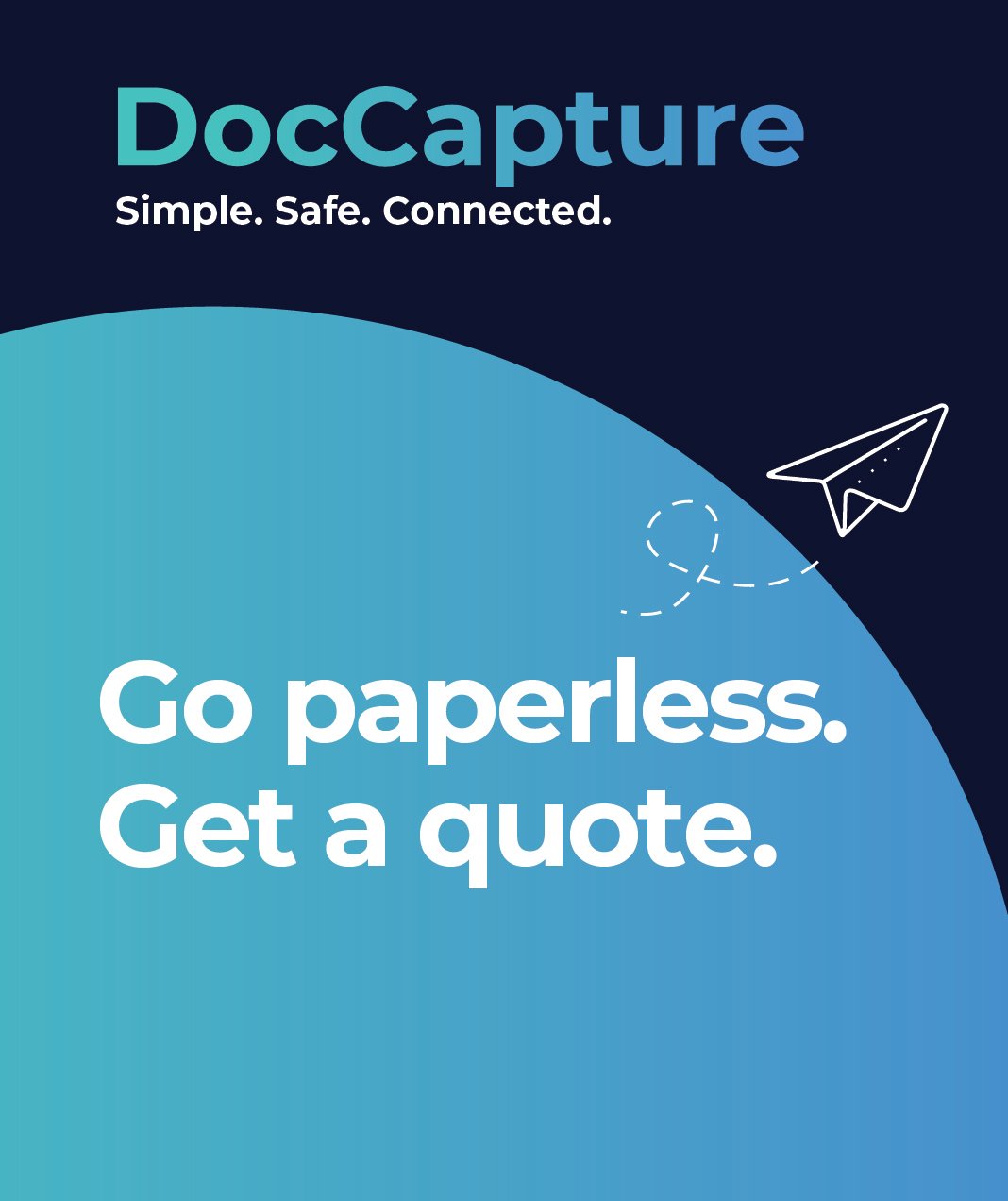Transforming HR Operations with Digital Document Scanning
Table of contents
Human Resources teams are under mounting pressure to modernize how they manage employee records. From onboarding paperwork and benefits documentation to compliance audits and performance reviews, HR departments are drowning in documents—often stored in outdated paper files or siloed systems. The result? Lost time, higher costs, and increased risk of noncompliance with labor laws and data privacy regulations.
For HR leaders, the challenge isn’t just about volume—it’s about accuracy, security, and efficiency. Manual filing systems and legacy storage create bottlenecks, expose sensitive data to breaches, and make audits and reporting cumbersome. At a time when speed and compliance are critical, these issues can stall HR’s ability to function as a strategic partner to the business.
This is where transforming HR operations with digital document scanning becomes a game-changer. By digitizing employee records, HR leaders can streamline document management, reduce administrative burdens, and ensure airtight compliance. Digital scanning not only improves accessibility and security but also delivers a faster, more cost-effective way to handle growing HR demands.
The Current HR Document Challenge
HR teams in mid-sized and large enterprises are responsible for managing thousands of employee documents, from contracts and payroll records to benefits paperwork, performance reviews, and disciplinary actions. For organizations that still rely on paper files or fragmented systems, these records can quickly become a logistical nightmare.
Paper-based processes create multiple risks. Files can be misplaced or misfiled, leading to errors that compromise employee trust or disrupt payroll and compliance audits. Retrieving records for regulatory checks—whether for GDPR, HIPAA, or U.S. labor laws—can take hours or days, delaying audits and increasing the chance of costly penalties. In some cases, outdated filing practices may even put sensitive employee data at risk, leaving HR leaders vulnerable to data breaches or legal action.
Budget constraints often exacerbate the problem. Many HR departments hesitate to invest in digital solutions due to concerns about integration with existing HRIS or ERP systems, while others worry about upfront costs. However, as documented in Digital Transformation in HR, organizations that make the switch to digital records often find that the long-term savings outweigh the initial investment.
For a closer look at how HR teams can modernize, DocCapture’s HR Document Scanning services help streamline the transition—making it easier to centralize, secure, and retrieve critical employee information without disrupting daily operations.
How Digital Document Scanning Transforms HR Operations
For HR leaders, the move to digital employee records isn’t just about convenience—it’s about creating a smarter, faster, and more compliant HR ecosystem. By transforming HR operations with digital document scanning, organizations can address three of the biggest pain points in HR: accuracy, compliance, and speed.
Improved Accuracy Through Automation
Manual filing systems make errors almost inevitable. Digital document scanning uses automated indexing and search functions to ensure every employee file is stored, tagged, and retrievable without manual sorting. This not only reduces the risk of misplaced documents but also streamlines workflows like payroll adjustments, performance reviews, and benefits administration.
Compliance Advantages
Regulations such as GDPR, HIPAA, and various state and federal labor laws require strict data handling practices. Digital record systems, as detailed in Digital Record Keeping for Human Resources, allow HR teams to securely store, encrypt, and control access to sensitive data. With audit trails and automated retention schedules, HR departments can meet regulatory standards more easily and reduce the risk of noncompliance fines.
Enhanced Speed and Efficiency
Whether it’s onboarding a new hire, preparing for an internal audit, or producing employee data for legal reviews, digital records save time. Employees and HR staff can access documents instantly from a centralized system, eliminating time spent searching through filing cabinets or requesting off-site records. This increased efficiency empowers HR teams to focus on strategic initiatives like talent development rather than administrative burdens.
For a broader perspective on the role of scanning in modern HR strategies, see The Role of Scanning in Modern HR Management.
Overcoming HR’s Biggest Barriers
While the benefits of digitizing HR records are clear, many HR leaders face common concerns that slow down adoption—especially around integration, cost, and security. Addressing these barriers head-on is critical to making the transition seamless and cost-effective.
Integration with HRIS and ERP Systems
One of the biggest fears for HR leaders is that a new digital document scanning system won’t work with their existing HR technology stack. Modern solutions, like DocCapture’s Document Scanning Services for HR Departments, are designed to integrate with leading HRIS and ERP systems, ensuring scanned records flow seamlessly into the tools HR teams already use.
Demonstrating ROI
Budgetary caution is another obstacle, especially when HR leaders must justify technology investments to finance departments. However, the ROI becomes clear when factoring in the cost savings from reduced storage, faster audits, improved compliance, and fewer hours spent on manual filing. Organizations often see measurable returns within months, as noted in case studies highlighted in Digital Transformation in HR.
Security You Can Trust
Data security is non-negotiable for HR departments handling sensitive employee information. Advanced digital scanning platforms use encryption, multi-factor authentication, and role-based access controls to safeguard records. These security protocols protect HR teams not just from accidental breaches but also from cyber threats and compliance violations.
By overcoming these hurdles, HR leaders can confidently transition from paper-based inefficiencies to a streamlined, compliant, and secure digital record-keeping process.
Real-World Benefits for HR Leaders
Digitizing employee records doesn’t just solve operational headaches—it delivers measurable value that HR leaders can use to drive performance and demonstrate ROI to executives. The results often include time savings, improved employee satisfaction, and significant cost reductions.
Tangible Time Savings
With digital document scanning, HR staff can retrieve records in seconds instead of minutes or hours. This translates to faster onboarding, smoother audits, and less time spent on administrative tasks, freeing up HR professionals to focus on strategic initiatives like workforce planning and employee engagement.
Better Employee Experiences
Employees benefit, too. Self-service portals connected to scanned records allow workers to access documents like pay stubs or benefits forms instantly, reducing wait times and administrative friction. This ease of access builds trust and satisfaction across the workforce.
Case Study Example
Consider a mid-sized manufacturing company with 1,500 employees that partnered with DocCapture to digitize 10 years of paper records. By implementing HR Document Scanning, the company reduced document retrieval time by 80%, cut annual storage costs by 40%, and improved audit preparation time by over 60%. HR leaders reported fewer compliance errors and a faster response time for employee requests—helping their team act as a true strategic partner to the business.
For HR teams seeking even more insight, our guide on Digital Record Keeping for Human Resources outlines additional benefits and best practices for leveraging digital solutions.
Next Steps: How to Start Digitizing Employee Records
Making the shift from paper-heavy HR processes to fully digitized records doesn’t have to be overwhelming. With the right approach, HR leaders can streamline the transition while minimizing disruption to daily operations. Here’s how to get started:
Assess Your Current Records
Begin with an audit of your existing HR documents. Identify what needs to be digitized, what can be archived, and what should be securely destroyed. This helps prioritize the most critical records for immediate scanning and ensures compliance with retention schedules.
Choose a Trusted Partner
Partnering with a provider like DocCapture, which specializes in HR Document Scanning, ensures your transition is seamless. DocCapture’s solutions integrate with leading HRIS and ERP systems, making it easy to centralize digital records and maintain compliance with data privacy laws.
Start Small with a Pilot Project
Many HR leaders find it helpful to pilot digital scanning with one department, such as payroll or benefits. This approach demonstrates value quickly, builds internal support, and allows HR teams to refine processes before scaling across the organization.
For a deeper dive into how digitization fits into a larger HR transformation strategy, explore our resource on Digital Transformation in HR.
Conclusion
For HR leaders, the shift to digital record management is more than a technology upgrade—it’s a strategic move that enhances efficiency, strengthens compliance, and frees up teams to focus on people, not paperwork. By transforming HR operations with digital document scanning, organizations can eliminate costly bottlenecks, protect sensitive employee data, and streamline everything from onboarding to audits.
If your HR department is ready to reduce costs, speed up processes, and safeguard employee records, now is the time to act. DocCapture’s HR Document Scanning solutions make the transition seamless, integrating with your current systems and ensuring compliance every step of the way.
Ready to start your HR digital transformation?
Fill out our “Get a Quote” form today and take the first step toward a faster, more compliant, and cost-effective HR operation.
Share this
You May Also Like
These Related Stories

Reducing Operational Costs in HR with Document Scanning

Navigating Regulatory Changes with Document Solutions in HR

